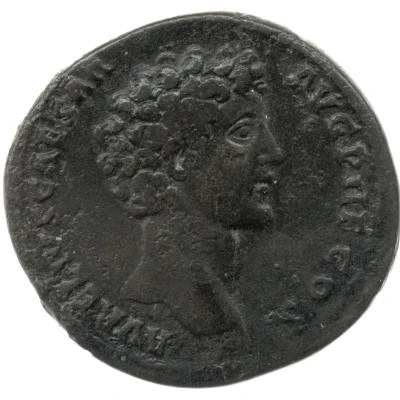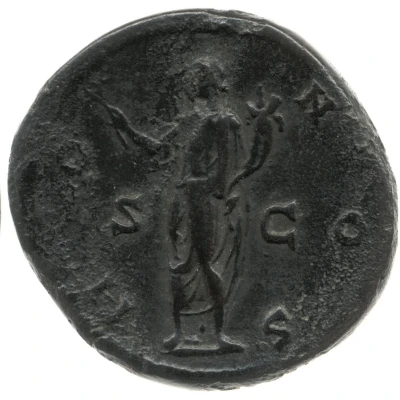Sestertius - Marcus Aurelius HILARITAS S C; Hilaritas
| Bronze | - | - |
| Issuer | Rome › Roman Empire (27 BC - 395 AD) |
|---|---|
| Emperor | Antoninus Pius (Titus Aelius Hadrianus Antoninus Pius) (138-161) |
| Type | Standard circulation coin |
| Years | 140-144 |
| Value | 1 Sestertius = ¼ Denarius |
| Currency | Denarius, Reform of Augustus (27 BC – AD 215) |
| Composition | Bronze |
| Shape | Round (irregular) |
| Technique | Hammered |
| Demonetized | Yes |
| Updated | 2024-10-06 |
| Numista | N#261741 |
|---|---|
| Rarity index | 100% |
Reverse
Hilaritas, standing left, holding palm and cornucopiae.
Script: Latin
Lettering: HILARITAS S C
Translation:
Hilaritas. Senatus Consultum.
Joy. Decree of the senate.
Comment
Source:Online Coins of the Roman Empire (OCRE)
Interesting fact
The Sestertius coin , which features Marcus Aurelius and the goddess Hilaritas, was part of a series of coins issued during his reign that aimed to promote the ideals of Stoicism, which was a philosophy that emphasized reason, self-control, and inner strength. The image of Hilaritas on the coin represents the idea of "cheerfulness" or "good humor," which was a key aspect of Stoic philosophy. This coin is a unique example of how ancient Roman coins were used not only as a means of currency but also as a way to promote philosophical and cultural ideals.

